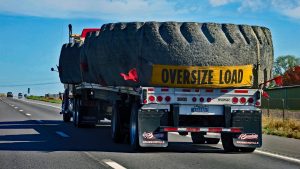In 2011, the National Highway Traffic Safety Administration and the Environmental Protection Agency jointly published the first-ever federal regulations mandating improvements in fuel economy and reductions in carbon dioxide (CO2 ) emissions by heavy-duty commercial vehicles. While the standards are arguably models of their kind, questions remain about the overall effectiveness and efficiency of even the best such regulations.
The Regulations
Heavy-duty vehicles range from pickups to combination truck trailers. For regulatory purposes, the agencies developed a simplified, three-way classification that aligns with how vehicles are manufactured and used, and thus, with the technological opportunities for fuel savings. Overall, heavy-duty vehicles account for about 17 percent of total greenhouse gas emissions from all transport sources.
Emissions Categories
The first category is heavy-duty pickups and vans, used for moving relatively small loads of people and goods for short distances. Vehicles in this category account for about 60 percent of the total heavy-duty fleet but just 20 percent of CO2 emissions. The new standards call for an average fuel intensity of 5.2 or 6.3 gallons per 100 miles, depending on whether they use diesel fuel or gasoline, representing a 17 or 12 percent reduction from the baseline.
Vehicles in the second category, combination trailers, are used in intercity freight hauling. These vehicles are estimated to account for 65 percent of fuel use and CO2 emissions from the heavy-duty fleet, even though they make up only about 20 percent of the fleet. The new standards for 2018 call for an average fuel intensity of 6.5–11.8 gallons per 1,000 ton-miles, representing a 10–24 percent reduction from the baseline.
The third category, vocational vehicles, is defined as all vehicles that are not in the other two categories. This category is enormously varied by size, use, and body design, and includes fire trucks, cement mixers, dump trucks, and school buses, among others. These vehicles range in size from 8,500 to 80,000 pounds. The new standards call for an average fuel intensity of 21–36 gallons per 1,000 ton-miles, representing a 6–9 percent reduction from the baseline.
In general, achieving reductions in fuel intensity is more difficult and expensive in this category. The predominant use of these vehicles at low speeds in urban and off-road settings makes aerodynamic improvements a wasted effort. The great variety of designs implies low volumes and small rewards for fuel-saving innovations.




